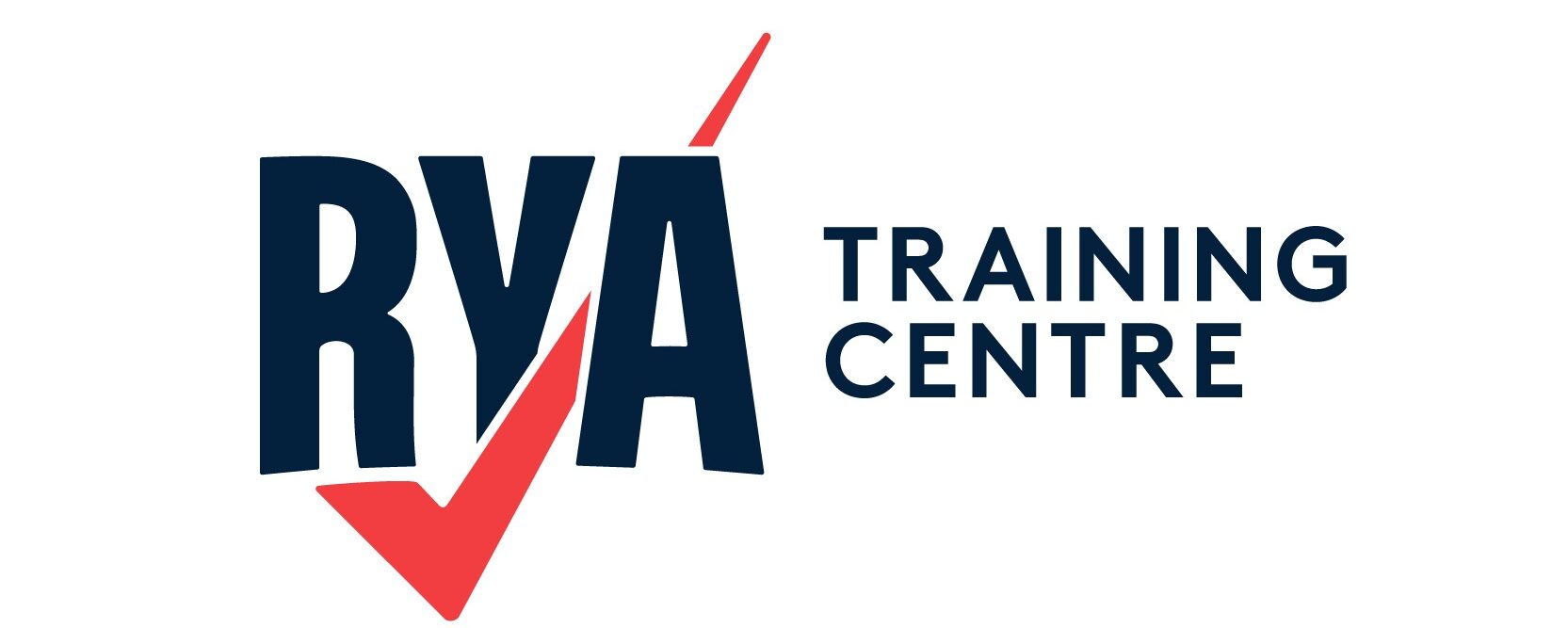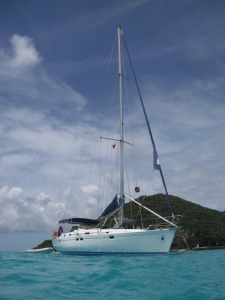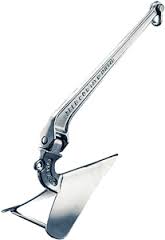Anchoring is a key skill to learn if you charter a sailing yacht or own your own boat. You may want to anchor up for lunch in a calm bay or for an overnight stay.
Anchoring is also useful if your engine fails and you are in a shallow area. It will prevent the yacht from running aground and give you time to fix the problem.
It is important that you are anchored securely so you can enjoy your surroundings and have peace of mind whilst you sleep.
Types of Anchor
Anchors work in two ways; they either rely on their weight to secure the sailing boat, or how they bury themselves based on design. There are four main types of anchor recommended for cruising yachts:

1. Bruce
This anchor gives great holding in sand or mud. It rarely pulls out but if it does then it will reset quickly due to the claw design.
This much-loved style of anchor has a strong holding power is often used as a storm anchor. The horizontal swivel design means that once the plough is set it won’t come out as the boat swings with a change in wind or tide direction. Good for sand, mud, grass, pebble and coral (protect the environment and don’t anchor in coral!!)

3. Delta
A similar design to the plough but without a swivel means that this anchor relies on its weight to stay secure. It is a strong anchor to use in sand, mud, grass and pebble. Easy to store at the bow of the boat.
This flat shaped anchor gives excellent holding in clay, sand or mud and is very easy to store. The anchor gradually buries itself although it may be dislodged with a strong tide change.
Anchoring Considerations
 Before dropping anchor you need to plan ahead. There are a number of factors to take into consideration including:
Before dropping anchor you need to plan ahead. There are a number of factors to take into consideration including:
- What is the bottom composition and do you have the right type of anchor?
- How deep is it?
- What is the difference in tidal height?
- Which direction is the wind and tide coming from and which is stronger?
- How much chain and rope should you let out?
- Is it sheltered enough from the wind?
- Are there any obstructions on the bottom or in the area?
- Will you be blocking a main channel?
After having checked your depth sounder and charts, you should prepare your anchor and chain and make a trial run to inspect the area.
Anchoring Procedures
 The process of dropping anchor is straight forward when good vocal or hand signal communication is used between the crew and the helmsman. It should go something like this:
The process of dropping anchor is straight forward when good vocal or hand signal communication is used between the crew and the helmsman. It should go something like this:
- A crew member goes on to the foredeck and directs the helmsman to the chosen anchoring point.
- The helmsman checks the depth and stops the boat.
- The crew member drops the anchor and as the vessel drifts back releases the correct ratio of chain or rope (4:1 or 6:1).
- If the anchor needs to be dug in then the helmsman very briefly and gently reverses the boat.
- Ensure the anchor snubber is attached correctly to take the strain away from the anchor winch.
Anchoring Issues
 The major anchoring issue that cruisers have is dragging. This will cause you to have a sleepless night and you may damage your boat (or someone else’s). You can check you are not dragging by following these simple steps:
The major anchoring issue that cruisers have is dragging. This will cause you to have a sleepless night and you may damage your boat (or someone else’s). You can check you are not dragging by following these simple steps:
- Snorkel or scuba dive on your anchor to check it is firmly set.
- Identify a transit with a handheld compass and check it regularly.
- Set the anchor-drag function on your GPS.
- Use an anchor alarm app which can be activated on your smartphone, tablet or laptop.
- If you are dragging then you will need to reset your anchor and possibly change your location.
Another issue you may experience is swinging. This in itself is normal, however, if you are anchored too close to other boats you may have a problem. You could either bump into them or dislodge their anchor with your chain (red faces all round!). Calculate the amount of chain/rope you have let out and make sure your swinging arc is clear.
 Weighing Anchor
Weighing Anchor
Raising the anchor is another simple process when clear communication is demonstrated between the crew. These are the simple steps:
- Position a crew member on the bow to direct the helmsman using hand or voice signals.
- Check how the boat is lying.
- If the boat is pulling away from the anchor, the helmsman motors forward slowly under the direction of the crew member who takes up the slack and raises the anchor.
- Stow the anchor immediately in the correct position for re-deployment.
RYA Resources
Candidates learn how to be a useful crew member on the RYA Competent Crew course. Your boat handling skills are further developed on the RYA Day Skipper Practical course. Your instructor will work with you to achieve the aim of safely anchoring a vessel.
The following RYA book is perfect for getting to grips with further boat handling skills whether under power or using sail:
Buy RYA Introduction to Boat Handling for Sail and Power at the RYA Shop
Beautiful photographs of Chao Lay by student Shaun McLean – thank you!





 Weighing Anchor
Weighing Anchor